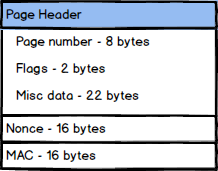 The RavenDB security report pointed out that we weren’t consistent in our usage of the Master Encryption Key. As a result, we changed things in a few locations, and we ended up never using the Master Encryption Key to encrypt anything in RavenDB.
The RavenDB security report pointed out that we weren’t consistent in our usage of the Master Encryption Key. As a result, we changed things in a few locations, and we ended up never using the Master Encryption Key to encrypt anything in RavenDB.
If you aren’t familiar with encryption, that might raise a few eyebrows. If we aren’t using an encryption key to encrypt, what are we using? And what is the Master Encryption Key (and with Capitals, too) all about?
This is all part of the notion of defense in depth. A database has the Master Encryption Key. This is the key that open all the gates, but we never actually use this key to encrypt anything. Instead, we use it to generate keys. This is what the KDF (Key Derivation Function) comes into play. We start from the assumption that we have an attacker that was able to get us into a Bad State. For example, maybe we had nonce reuse (even though we already eliminated that), or maybe they have a team of Hollywood cryptographers that can crack encryption in under 30 seconds (if they have a gun to their head).
Regardless of the actual reason, we assume that an attacker has found a way to get the encryption key from the data on disk. Well, that wouldn’t really help them too much. Because that encryption key they got isn’t the key to the entire kingdom, it is the key for a very specific cupboard inside a specific room into a specific house in that kingdom. The idea is that whenever we need to encrypt a particular piece of data, we’ll use:
pageKey = KDF(MasterEncryptionKey, “Pages”, PageNumber);
And then we’ll use the pageKey to actually encrypt the page itself. Even if an attacker somehow managed to crack the encryption key on the page, all that gave them is the page (typically 8KB). They don’t get full access.
In similar vein, we also use the notion of different domains (“Pages, “Transactions”, “Indexes”, etc) to generate different keys for the same numeric value. This will generate a different key to encrypt any one of these values. So even if we have to encrypt Page 55 and Transaction 55, they would use a different derived key.
This is not needed assuming all else is well, but we don’t assume that, we actually assume Bad Stuff, and try to get ahead of the game so even then, we’re still safe.













